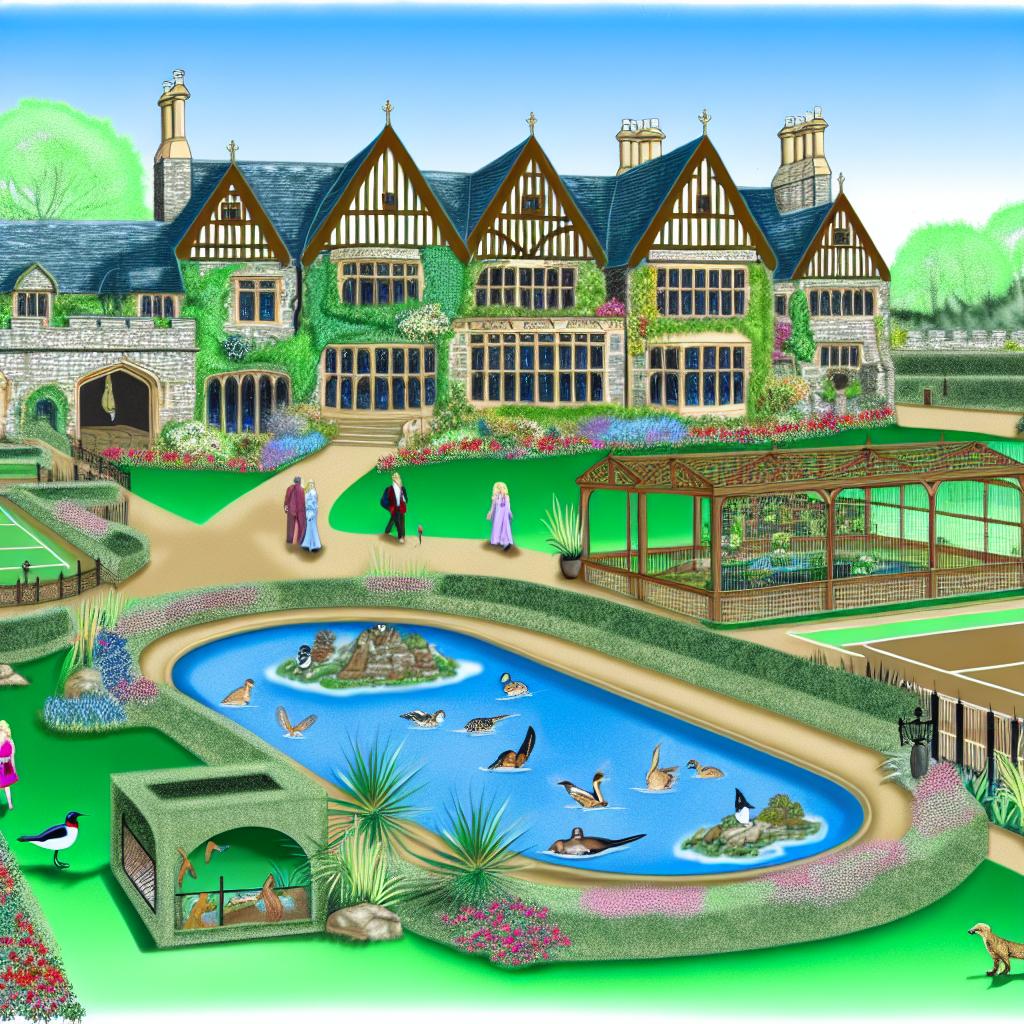Contents
History and Development of the Playboy Mansion
The icon that is the Playboy Mansion, located in the upscale neighborhood of Beverly Hills, California, has played a pivotal role in popular culture since its inception. Originally purchased in 1971 by Hugh Hefner, the mastermind behind the Playboy magazine empire, this esteemed property soon became a hallmark of luxury and exclusivity.
The Early Years
The mansion’s origins date back to 1927 when it was constructed by the renowned architect Arthur R. Kelly. The design was decidedly Gothic-Tudor, an architectural style that would provide the perfect backdrop for the opulent lifestyle that the mansion would later be known for. Initially owned by Arthur Letts Jr., who was an heir to a Los Angeles department store fortune, the property held a quintessential allure even before it entered the annals of pop culture history.
In 1971, Hugh Hefner made a life-altering decision by acquiring the property for about $1.1 million. His aim was to establish a West Coast counterpart to the original Playboy Mansion located in Chicago. What began as a business venture soon morphed into a cultural phenomenon that riveted the global audience.
The Transformation
Hefner had a vision to transform the mansion from a mere residence to a nucleus of entertainment and glamor. Significant renovations were undertaken, adding various unique features that would later become iconic. The mansion came to include elements such as a zoo and an aviary, housing exotic animals that further emphasized the lavish lifestyle advocated by Playboy.
One of the most well-known aspects of the mansion is its grotto, an artificial cave-like structure integrated with a swimming pool, which became emblematic of the hedonistic parties hosted there. Additional facilities such as tennis courts and a game room offered extensive entertainment options, contributing to the estate’s reputation as a place of excess and indulgence. The Playboy Mansion thus quickly evolved into a hotspot for extravagant parties frequented by celebrities, models, and influential figures.
Cultural Impact
Throughout the decades, the Playboy Mansion has solidified its status as a symbol of hedonism and high society life. Its legendary parties often included A-list celebrities and iconic musicians, making headlines around the world. Beyond serving as a high-profile social venue, the mansion became a favored locale for numerous media productions. Films, TV shows, and photo shoots capitalized on its unique aesthetic and cultural clout, further entrenching its place in Hollywood folklore.
Controversies and Criticism
The aura of glamor surrounding the mansion was not without its dark clouds of controversy. Criticisms were often levied against the representations of women within its walls and the extravagant lifestyle it endorsed. While some who experienced the mansion first-hand described it as a glamorous wonderland, others criticized it for facilitating behaviors perceived as excessive or inappropriate. The mansion thus became a focal point in discussions about cultural attitudes towards wealth, luxury, and gender dynamics.
Changes in Ownership
In 2016, the mansion witnessed a pivotal transition when it was sold to billionaire investor Daren Metropoulos for a staggering $100 million. An interesting stipulation in the sale contract allowed Hefner to continue residing in the mansion until his death in 2017. Metropoulos, already invested in the surrounding areas due to his purchase of the adjacent property in 2009, expressed his vision for the estate: to restore and maintain it while preserving its unique historical narrative.
Current Status
Following the acquisition, Metropoulos initiated extensive renovations intended to rejuvenate the estate while honoring its historic grandeur. As a private residence, the level of public access to the mansion is now limited, yet its legacy continues to linger in popular imagination. The estate’s storied past ensures its ongoing presence in cultural conversations, though how it continues to evolve will remain a subject of speculation.
Further Reading and Resources
For those interested in delving deeper into the history and influence of the Playboy Mansion, resources from established publications such as Forbes and The Hollywood Reporter offer comprehensive analyses and insights. These outlets provide a more thorough exploration of the mansion’s intricate role in entertainment and society.
Conclusion
The Playboy Mansion in Beverly Hills remains an emblem of luxury, entertainment, and controversy. Despite its transition to new ownership, the mansion’s storied past and lasting cultural impact will likely keep it a topic of intrigue for the foreseeable future. This nexus of opulence and debate retains its allure, underscoring the complexities and contradictions inherent in the tale of the Playboy Mansion.

